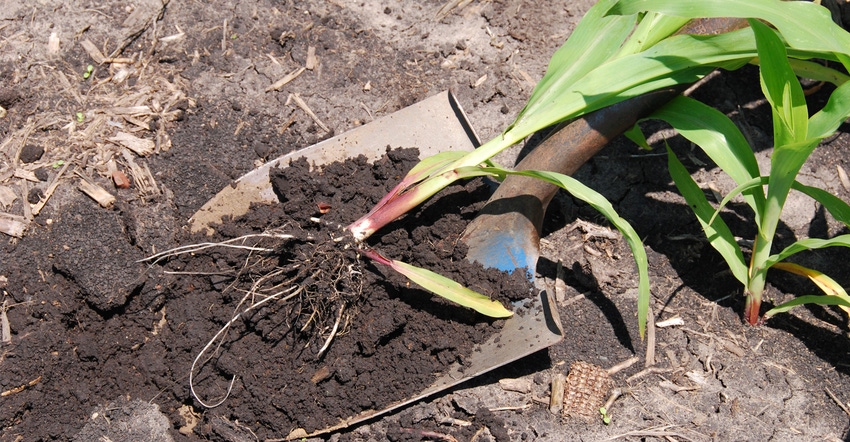
Lately there have been lots of questions asked about sampling fields for plant-parasitic nematodes that feed on corn. One of the most often-asked questions is when should you sample the soil and send it to a lab for testing? Should you also sample corn roots? Where should you send the soil samples and root samples for testing?
Iowa State University Extension plant pathologist Greg Tylka, an expert on nematode management, provides the following answers and related information.
This diverse group of microscopic worms includes some species that cause yield loss at very low population densities. There are other species that are not harmful until population densities reach many hundreds or more per 100 cubic meters of soil. That’s a little less than a half-cup of soil. And there are still other species that are not thought to be harmful to corn at all.
Several species present in Iowa fields
It is common for Iowa fields to have several species of plant-parasitic nematodes present at low numbers, says Tylka. It’s only when numbers reach damaging levels that symptoms of injury will appear.
Unfortunately, fields cannot be sampled in the fall to assess the situation, says Tylka. Sampling to check for damaging levels of corn nematodes needs to be done during the growing season — ideally when symptoms of damage are seen. Tylka lists the following guidelines on how to collect soil samples for assessing the potential for damage and yield loss caused by nematodes that feed on corn.
What type of sample should be collected?
The type of sample collected depends on the corn’s growth stage:
• Up to V6. Collect soil and root samples. Use a soil probe and collect cores that are at least 12 inches long. Collect 20 or more soil cores to represent an area. Be sure to take cores from within the root zone of plants showing symptoms of damage. Combine (but do not mix) the soil cores and place them in a sealed plastic bag labeled with permanent marker.
With a shovel, collect the root mass from four to six plants with symptoms of damage. Take care not to strip off the smaller, seminal roots. The tops of the plants can be cut off and discarded. Place the roots in a sealed plastic bag labeled with permanent marker.
Protect the samples from physical jarring and keep the samples cool (room temperature or below).
• V6 through R3 (milk stage). Use a soil probe and collect 20 or more soil cores that are at least 12 inches long to represent an area. Take the cores from within the root zone of plants showing symptoms of damage.
Combine (but do not mix) the soil cores and place them in a sealed plastic bag labeled with permanent marker. Protect the samples from physical jarring and keep the samples cool (room temperature or below).
• From R4 (dough stage) to harvest. Sampling is not recommended. There is not a reliable relationship between damage or yield loss and the number of nematodes present in soil and roots once the corn crop reaches the R4 growth stage. Therefore, sampling is not recommended after this point in the growing season.
Where to send your samples for testing
Several private labs and most land-grant university plant diagnostic labs or clinics process samples and determine the identities and numbers of plant-parasitic nematodes present. A list of the university laboratories and their contact information can be found online.
At Iowa State, the facility's location and address is: Plant and Insect Diagnostic Clinic, Room 327 Bessey Hall, 2200 Osborn Drive, ISU, Ames, IA 50011.
The test for nematodes that feed on corn from the ISU Plant and Insect Diagnostic Clinic is called the “complete nematode count.” Samples sent to the ISU Clinic should be accompanied by a Nematode Sample Submission Form (ISU Extension Publication PIDC 32).
Management options
If damaging population densities of nematodes are found, there is nothing that can be done during the season to manage the nematodes and lessen the yield loss. Management options for future corn crops include use of soil-applied Counter 20G nematicide or seed treatments such as Avicta, Votivo and Nemastrike. Use of these management options must be decided upon before the corn crop is planted.
About the Author(s)
You May Also Like




